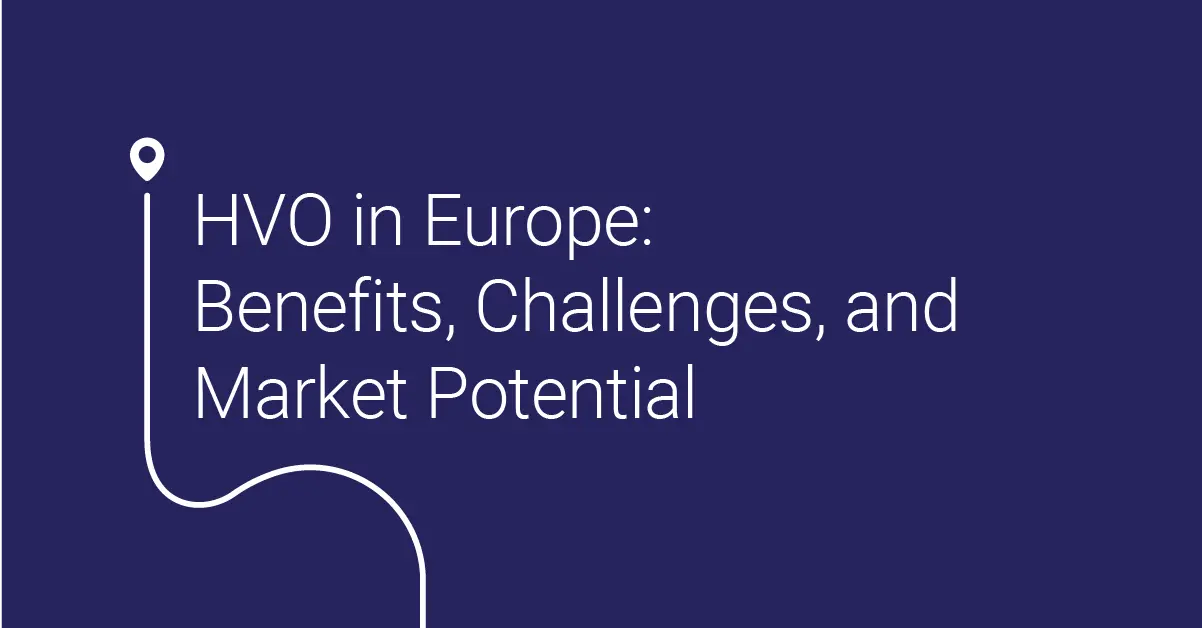HVO (Hydrotreated Vegetable Oil) is a renewable fuel that can reduce CO₂ emissions by up to 90%. It’s made from vegetable oils and organic waste and is fully compatible with Euro 6 engines — no technical changes or upgrades required.
✅ HVO Benefits — Short and to the Point
🔹 Immediate CO₂ reduction, no truck modifications needed
HVO is fully compatible with Euro 6 and most Euro 5 engines — confirmed by major truck manufacturers. No technical upgrades or maintenance changes are required. This means fleets can switch to HVO without extra investment.
The result? Up to 90% CO₂ savings, from the first load.
🔹 “Green routes” available in Western and Northern Europe
Countries like Spain, France, Germany, the Netherlands, Sweden, and Denmark already have a growing network of HVO fueling stations. Along these routes, HVO becomes a real option for companies seeking lower-carbon deliveries.
🔹 Stronger brand image for ESG-oriented businesses
Choosing HVO signals real environmental commitment. In a market where sustainability is increasingly a selection criterion, companies that can prove lower transport emissions gain a competitive edge.
🔹 Tangible support for sustainability targets in your supply chain
Many companies have set ESG goals for 2030 — including Scope 3 emissions reduction. HVO offers a practical, scalable solution that delivers results now. It can be integrated into hybrid strategies alongside intermodal, LNG, or electric solutions.
⚠️ Current Challenges — What to Know Before Using HVO
🔸 Higher cost than regular diesel (~10–15%)
HVO has a more complex production process and rising demand. The per-litre price is higher but justified by the lower emissions and ESG visibility.
🔸 Limited availability in Eastern Europe
HVO is not yet available at fuel stations in Romania, Bulgaria, or Poland. Refueling is currently possible only in Western countries, limiting local use, but not international transport.
🔸 Fueling infrastructure concentrated in the West
HVO stations are well developed in Western Europe, but coverage is uneven. Not all routes allow consistent refueling, so each case must be carefully planned.
🔸 Requires client–carrier cooperation for economic viability
To make HVO financially feasible, open discussion between client and transport provider is key. GOPET supports this process, from emissions reduction estimates to tailored pricing scenarios.
Who Can Benefit from HVO Transport?
🔹 International retailers and FMCG
Large-volume, EU-wide companies with transparent sustainability reporting.
🔹 Industrial producers focused on decarbonization
Businesses targeting Scope 3 emissions reductions — including through logistics suppliers.
🔹 Exporters to ESG-mature markets
Shipments to Germany, France, the Netherlands, or Sweden — where clients expect low-carbon transport.
🔹 Tech companies and startups
Brands embedding environmental values into their business model and seeking aligned logistics partners.
Conclusion
HVO isn’t just a future solution — it’s already a viable option for companies looking to decarbonize their supply chain with no technical barriers and measurable results.
Companies that adopt HVO aren’t just moving freight. They’re leading by example in a market where sustainability is clearly a competitive advantage.
📩 Wondering if HVO fits your transport needs?
Reach out to us at hello@gopettrans.com and let’s evaluate your route, cost, and impact together.

